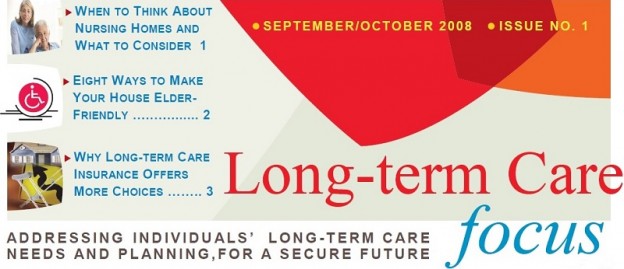The cost of medical care in the US is rising and showing no sign of slowing
It’s no surprise that the price of healthcare in America is rising, and quickly. Since 1995, the cost of medical care in the U.S. has risen over 40% and is showing no sign of slowing down. That kind of sticker-shock can be difficult to comprehend, even for those with solid retirement plans. It’s a trend that some insurers are trying to abate.
One of the largest medical costs today is long-term care. Caring for someone who cannot take care of themselves, whether they need an in-home companion, or round-the-clock care, can be devastatingly expensive. In fact, the average cost of a one year stay at a nursing home, is almost $70,000. And that’s why long-term care insurance is available. Its goal is to reduce that financial burden.
As with every product, long-term care insurance has its pros and cons but a large number of Americans haven’t even considered this product as part of their overall retirement planning. That’s why recently more insurance and financial companies have begun offering long-term care insurance with a variety of other benefits and options.
Cost
One of the biggest complaints against some long-term care policies has been their price tag. While most policies can potentially save their holders a great deal in medical costs, they can still be expensive. In an effort to increase the use of the insurance, some insurance companies are beginning to reduce their rates on policies by as much as 15%. Some companies may also start adding a “shared care” element to their policies. In theory, that would allow someone who ran out of long-term care benefits to begin using their spouse’s benefits.
Confusion and Availability
Some people are simply confused about what the insurance is and how you can purchase it. So in an attempt to clear up some of the confusion, companies are beginning to simplify their policies and the process to buy the insurance.
Companies are also teaming with more employers to add long-term care coverage to the list of employee benefits. This is similar to the way that group life insurance has become a staple of many companies’ benefits plans.
Return on Investment
One final criticism comes from people who purchase long-term care policies and end up never needing them. While this is an obvious risk you take when purchasing any insurance, companies are now working to increase the benefit of having the insurance.
Long term care policies are also becoming more flexible and more able to tailor policies to an individual’s needs and are working to become more of an investment option, in some cases they may even combine an annuity feature.
With all of the improvements and added features of long-term care policies, more Americans may begin to take another look at this product. And while long-term care insurance isn’t for everyone, it may be a great addition to your retirement plan. You should always work with a financial professional before purchasing the insurance. Long-term care insurance may be worth considering, as the cost of medical care doesn’t seem to be slowing down any time soon.
Adapted from an article by Robert Valentine.
Senior Care Focus (Long-term Care Focus), Issue No. 1, September/October 2008

